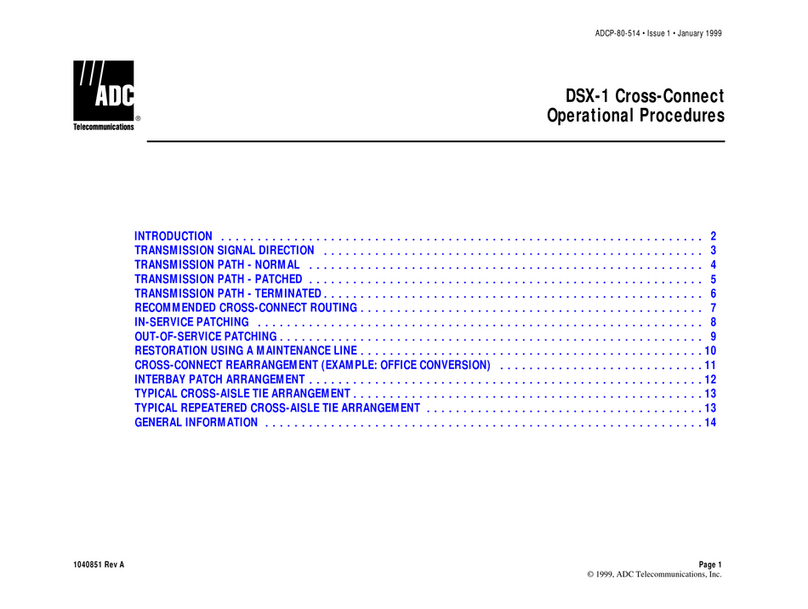
AEQ Audio Over IP
Routing System
3
3.3.1.1. Installation...............................................................................................26
3.3.1.2. Turning ON..............................................................................................26
3.3.1.3. Monitoring audio and creating routes......................................................26
3.3.1.4. Optimization. ...........................................................................................26
3.3.2. AEQ Audio over IP system for medium to large sized stations. ...........................27
3.3.3. AEQ Audio over IP system for medium to large sized stations based on TITAN /
BC 2000 D TDM Matrix.........................................................................................28
4. "DANTE CONTROLLER": REAL-TIME OPERATION SOFTWARE. ....................................30
4.1. "Dante Controller" Description.........................................................................................30
4.2. Minimum System Requirements......................................................................................30
4.3. Installing "Dante Controller".............................................................................................31
4.3.1. Downloading "Dante Controller". ..........................................................................31
4.3.2. Installing "Dante Controller" on Windows. ............................................................31
4.3.3. Updating "Dante Controller" on Windows.............................................................31
4.3.4. Uninstalling "Dante Controller" on Windows.........................................................32
4.4. Where to find the "Dante Controller" application? ...........................................................32
4.5. Configuring "Dante Controller".........................................................................................32
4.6. Using "Dante Controller"..................................................................................................37
4.7. Using "Dante Controller": "Network View". ......................................................................37
4.7.1. "Network View" Menu Bar.....................................................................................38
4.7.2. "Network View" Tool Bar.......................................................................................38
4.7.3. "Network View" Status Bar....................................................................................39
4.7.4. "Network View" Tabs.............................................................................................39
4.7.4.1. "Routing". ................................................................................................39
4.7.4.2. "Device Info" (status of the device).........................................................46
4.7.4.3. "Clock Status".........................................................................................46
4.7.4.4. "Network Status". ....................................................................................56
4.7.4.5. "Events"...................................................................................................57
4.7.5. Automatic Notification of Device Errors. ...............................................................59
4.8. Using "Dante Controller": "Device View"..........................................................................59
4.8.1. "Device View" Menu Bar.......................................................................................61
4.8.2. "Device View" Tool Bar.........................................................................................61
4.8.3. "Device View" Tabs...............................................................................................62
4.8.3.1. "Receive".................................................................................................62
4.8.3.2. "Transmit"................................................................................................65
4.8.3.3. "Status"....................................................................................................66
4.8.3.4. "Latency".................................................................................................67
4.8.3.5. "Device Config". ......................................................................................69
4.8.3.6. "Network Config".....................................................................................72
4.8.3.7. "AES67 Config".......................................................................................74
4.9. Using "Dante Controller": Multicast Transmit Flow Configuration. ..................................75
4.10. Using "Dante Controller" with "Dante Domain Manager"...............................................77
4.10.1. Viewing Domains in "Dante Controller"...............................................................77
4.10.2. Virtual Devices....................................................................................................78
4.10.3. Legacy Devices...................................................................................................79
4.10.4. Domain Credentials. ...........................................................................................79
4.11. Presets...........................................................................................................................80
4.11.1. About Device Roles. ...........................................................................................80
4.11.2. Saving Presets....................................................................................................80
4.11.3. Applying Presets.................................................................................................81
5. CONTROL TERMINAL. "DANTE VIRTUAL SOUNDCARD".................................................85
5.1. Installing the "Dante Virtual Soundcard"..........................................................................86
5.2. Starting the "Dante Virtual Soundcard" Control Panel.....................................................87
5.3. Obtaining a "Dante Virtual Soundcard" License..............................................................87
5.4. Configuring "Dante Virtual Soundcard"............................................................................88
5.4.1. Settings available in "Dante Controller"................................................................88
5.4.2. "Settings" Tab in "Dante Virtual Soundcard".........................................................89
5.4.3. "Licensing" Tab in "Dante Virtual Soundcard". .....................................................92



























